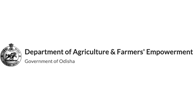The GCF project, titled "Ground water recharge and Solar Micro Irrigation to ensure food security and enhance resilience in vulnerable tribal areas of Odisha", aims to enhance climate resilience and promote sustainable development in the state of Odisha, India.
Aim/Primary Objective of the GCF Project: The primary objective of this project is to enhance groundwater recharge in the community ponds through structural adaptation measures and use of solar pumps for micro-irrigation to ensure water security and food security in the vulnerable areas of the state of Odisha, India.
Sub-Objectives of the Project: The sub-objectives to achieve its primary aim:
- Augmentation of groundwater recharge to improve water table and water quality conditions in rural areas (Gram Panchayat) through the adoption of recharge systems in existing village ponds/tanks.
- Sustainability of groundwater-based schemes (domestic/irrigation) at the Gram Panchayat level, including the revival of defunct community tanks used as drinking water sources for reducing vulnerability.
- Use of solar pumps for irrigation as a component of a low-emission, climate-resilient crop planning strategy.
- Increased climate-resilient sustainable development.
- Enhanced livelihoods and increased resilience for the most vulnerable people, communities, and regions.
- Increased resilience of health and well-being, and food and water security.
- Promotion of a sustainable strategy for energy security through low-emission crop water management.
- Create a knowledge base for enabling policy and regulatory framework for market transformation
Components and Activities of the GCF Project: The project is structured into seven main components, each with specific outputs and activities:
Project Management
- Activity 7.1.1: Inter departmental steering committee for the project notified This activity involves formally notifying and establishing the inter-departmental steering committee for the project, which will provide overall direction and ensure coordination.
- Activity 7.2.1: Project Implementation plan developed and approved This activity focuses on developing and securing approval for the detailed Project Implementation Plan, which guides the efficient execution of project activities.
- Activity 7.3.1: Project Implementation plan developed and approved This activity ensures that agreements for goods and services are signed and service providers are mobilized effectively to support project implementation.
- Activity 7.4.1: Agreements for good and services signed and service providers mobilized This activity establishes a seamless reporting mechanism to the National Implementing Entity (NIE), ensuring continuous information flow and transparency.
- Activity 7.5.1: Fund flows, physical work progress and web based monitoring ensured This activity is dedicated to ensuring effective monitoring of fund flows, physical work progress, and web-based monitoring, supported by website development and maintenance.
Output 7.1: Inter departmental steering committee for the project notified
Output 7.2: Project Implementation plan developed and approved
Output 7.3: Agreements for good and services signed and service providers mobilized
Output 7.4: Seamless reporting to NIE established
Output 7.5: Fund flows, physical work progress and web based monitoring ensured
The project, through these components and activities, aims to create a ripple effect, much like a well-maintained reservoir system not only stores water for immediate use but also continuously recharges the underlying aquifer, ensuring long-term water availability even during dry spells, while simultaneously powering modern, efficient irrigation, symbolizing a dual benefit for both resilience and progress.











